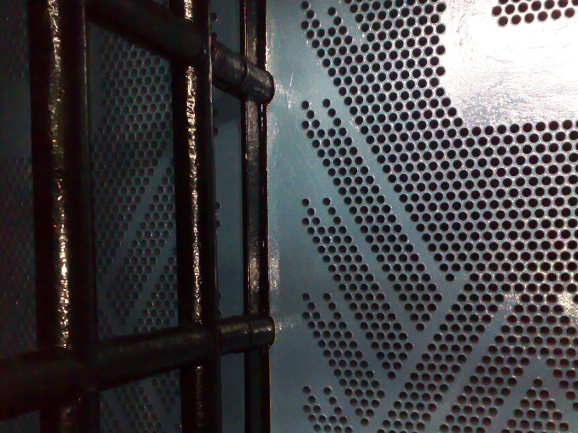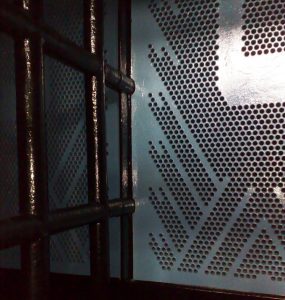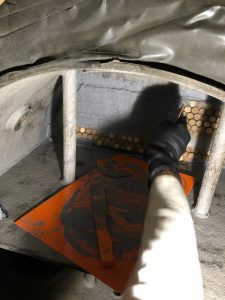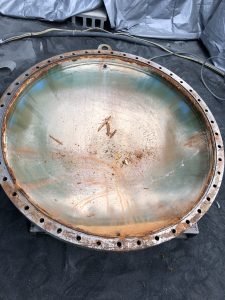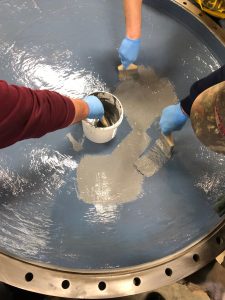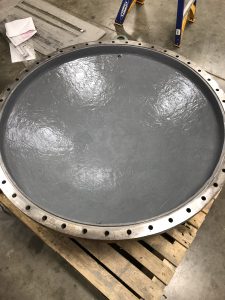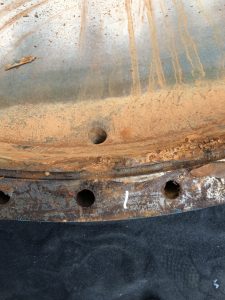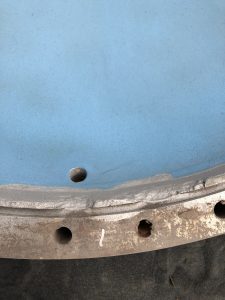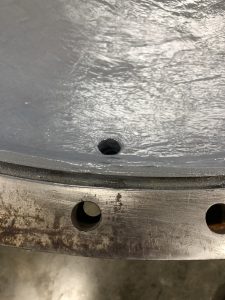Projectile Tube Cleaning offers industrial coatings for heat exchangers, condensers, tube sheets, water boxes, end bells, flange faces, division bars, piping, and various other equipment that is exposed to corrosion and degradation. Heat exchanger coatings, tube sheet coatings, and coatings on related equipment can prevent future corrosion and degradation.
Surface Condenser Tube Sheets
Tube sheet corrosion on power plant surface condensers is a common issue as many plants have re-tubed their aging condensers with higher alloy metals such as titanium and stainless steel. The main cause of the tube sheet corrosion is due to the dissimilarities between the tube sheet material and the new higher alloys being installed.
Condenser tubes are traditionally expanded into the tube sheet by using rollers. During normal use, the friction seal of the tube to tube sheet could become damaged for various reasons. Breaking this seal can cause water in leakage into the hotwell which can have serious adverse effects on the overall performance of the unit and ultimately damage steam side equipment such as the turbine blades.
Tube sheet coatings can be used as a solution to prevent both corrosion and tube to tube sheet leakage.
HVAC Chillers and Heat Exchanger Coatings
Chillers and other heat exchangers are susceptible to the same degradation process as surface condensers. With chillers, in particular, the main source of degradation is galvanic corrosion. Chillers and other heat exchangers are also vulnerable to many other damage mechanisms such as erosion and corrosion from various other sources. Tube sheet coatings for chillers can be used to put a stop to this damage and provide long term protection to this equipment.
Applying Coatings – The Process:
Heat exchangers and related equipment are repaired using two types of materials. Metal repair composites are used when the surface of the metal is damaged. The metal repair composite is used to fill in the gaps of the damage and build the metal surface up to its original design. After the metal repair material is used, multiple layers of epoxy coatings are applied to specified thicknesses. Before either the metal repair composite or the epoxy is applied, the metal surface needs to be prepared usually by grit blasting the surface of the metal to remove corrosion and create a profile for the coatings to adhere to. After successfully blasting, the metal repair composites are applied to select locations as needed. The metal repair surfaces are sanded and then prepared for the coatings to be applied in successive layers. Coating heat exchanger tube sheets have some added steps to block off the tube openings, but the overall process uses essentially the same steps.
End Bells, Water Boxes, Piping
Related equipment such as heat exchanger end bells, water boxes, and piping systems encounter the same damage mechanisms as the tube sheets discussed above. Coatings can be used to protect this equipment.
Flange Repair
Flange surfaces that are extremely deteriorated can be repaired and rebuilt with metal repair composites. The composites can be used to completely rebuild the structure of the flange in order to fully repair the sealing surface. Flange repair with composites like this can be a lower-cost alternative to other methods such as welding. The pictures below show damage to a sealing surface that was repaired and then coated:

